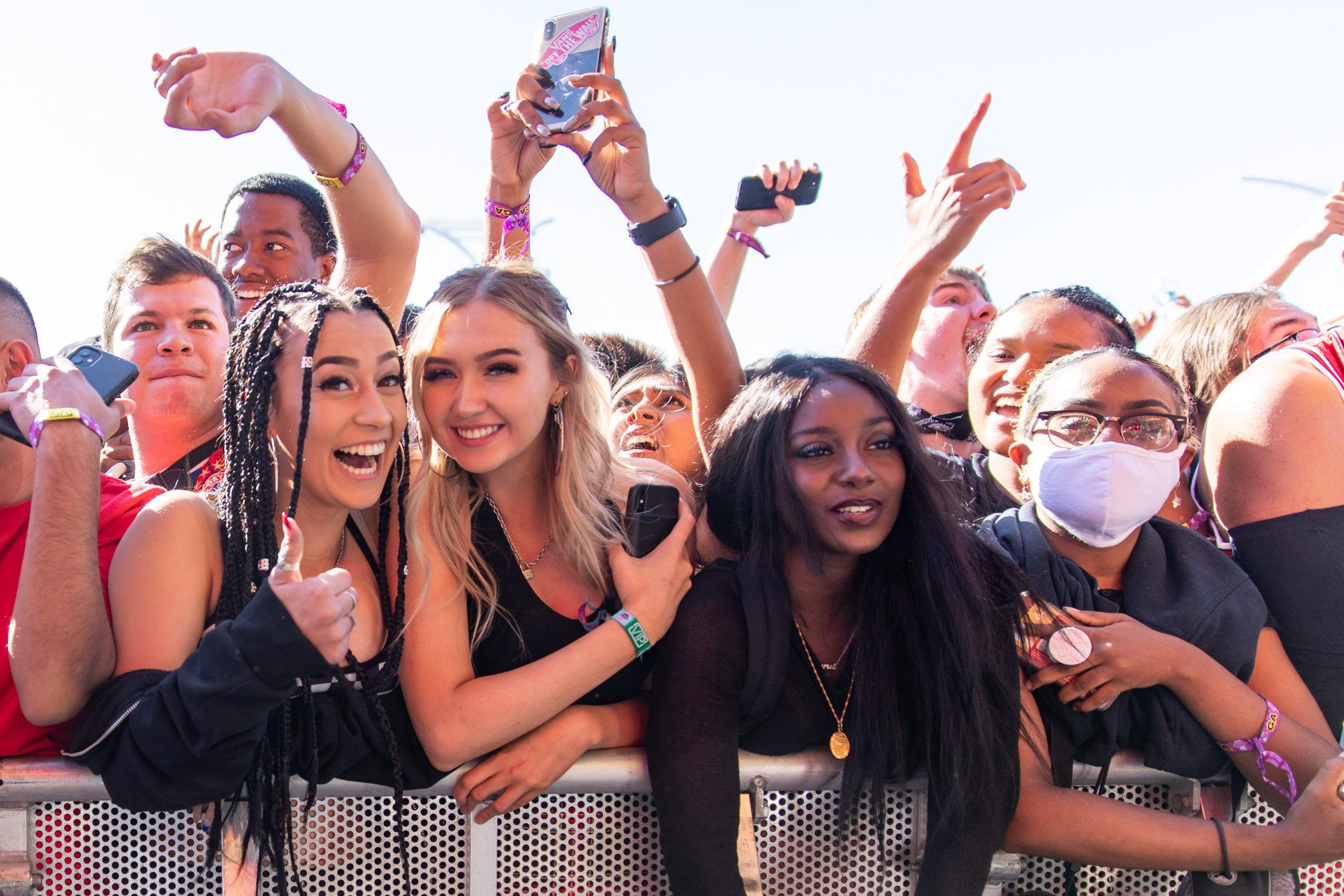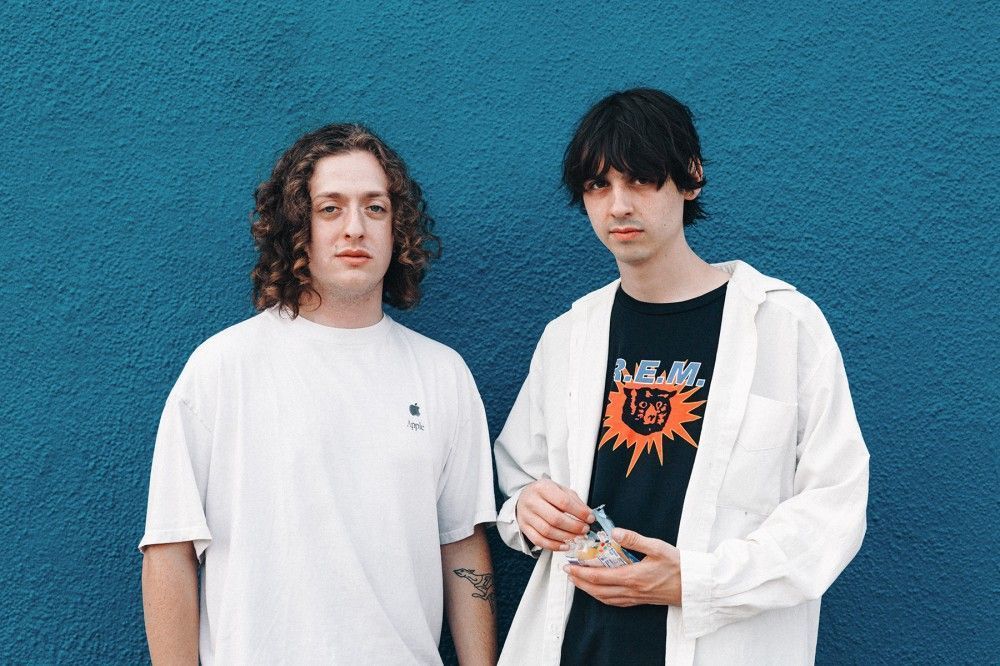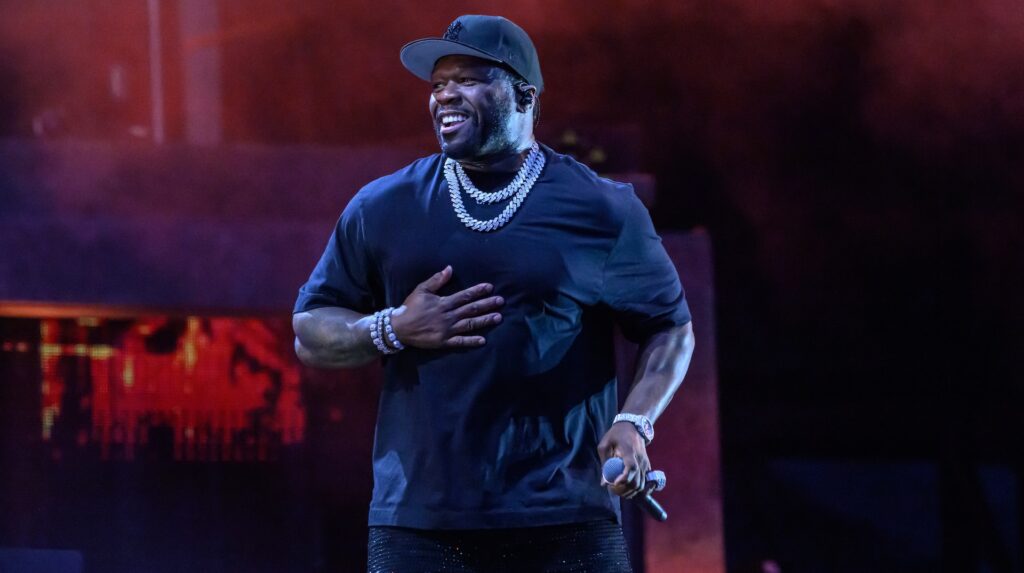
Las Vegas Police ‘Adjust’ Day N Vegas Plans After Astroworld Tragedy: ‘We Don’t Want a Repeat of That in Our City’
The Day N Vegas festival, which starts on Friday, offers a formidable collection of talent — Pulitzer Prize winners (Kendrick Lamar) and vocal virtuosos (Jazmine Sullivan), radio hitmakers (Doja Cat) next to underground stalwarts (Freddie Gibbs). With around 40 performances each day, it’s an almost overwhelming display of the best and brightest in hip-hop and R&B.
But one major star is no longer on the lineup: Travis Scott. The rapper was set to headline Saturday’s festivities during the three-day event, but he pulled out after last weekend, when his Astroworld festival in Houston devolved into a trampling crush of bodies, leaving at least nine people dead and hundreds injured. Post Malone will sub in for Scott on Saturday.
Las Vegas Metropolitan Police officials said this week that they had been speaking with their counterparts in Houston about last week’s tragedy in an attempt to make sure nothing similar takes place this weekend. “Our department has been in touch with officials over in Houston with regards to the incident that took place there,” says Officer Misael Parra. “Obviously we don’t want a repeat of that in our city. We’ve been in communication about the things that were in place there and the things that went wrong. We’ve made some adjustments over here to try to mitigate any potential problems that might arise.” (A representative for AEG, which owns the Day N Vegas promoter Goldenvoice, declined to comment.)
Officials mostly avoided providing specific details about those “adjustments,” frequently citing “operational security.” Officer Parra declined to comment when asked about the number of police and security personnel that would be on site for Day N Vegas. (For comparison’s sake, there were more than 1,000 private security employees and police officers at Astroworld.) The chief of the Clark County fire department also declined to answer questions, directing queries back to the police department.
Las Vegas police and government officials were quick to note that they are used to hosting festivals far bigger than Astroworld without a hitch. Electric Daisy Carnival is their largest event, according to Larry Hadfield, an LVMPD public information officer, with more than 150,000 attendees a day for three straight days. The Life Is Beautiful festival also reportedly brings in 60,000 people a day, making it “even more robust than Day N Vegas,” according to Dina Dalessio, deputy chief of operations for Las Vegas.
“We definitely approach these types of mass gatherings quite different than most people do around the country,” Dalessio continues. “We have so many of them, we’ve learned from other big incidents, and we’ve had some experiences that would warrant developing policies, procedures, and best practices that we’ve implemented.”
Dalessio says that Las Vegas and neighboring Clark County, where Day N Vegas takes place, now rely on “a real standard approach” when it comes to festivals. She ticks off a series of examples: “The way we create a perimeter with fencing, with egress and access points, hundreds of police, 50-plus private ambulance personnel, a lot of internal teams on ground management, multiple cameras that law enforcement has set up everywhere, and one big command post where you can hone in on anything in two seconds.”
A key part of the city’s advance preparation, Dalessio says, is a series of “tabletops” — the rest of us just call these “meetings” — with festival staff and law-enforcement agencies, where attendees game out every conceivable disaster ahead of time. The latest tabletop occurred on Tuesday, according to Officer Hadfield.
“You name the scenario, we work through it,” Dalessio explains. “A hostile MCI — mass casualty incident — could be anything from a vehicle ramming to an active shooter, or it could be that some sort of mass amount of people took a bad batch of a drug.” In each potential disaster scenario, Officer Hadfield says that festival organizers, law enforcement, the fire department, and medical personnel determine what their responsibility would be.
Of course, Astroworld planners had also prepared for — or at least imagined the possibility of — a wide variety of “disaster scenarios.” According to an Event Operations Plan that runs close to 60 pages, these potential incidents included assaults (“detain the perpetrator if SAFE to do so”), active shooters (“determine the most reasonable way to protect your own life”), riots (“the key … is proper management of the crowd from the minute the doors open”), earthquakes (“move away from buildings”), and tornadoes (“seek shelter”).
However, that operations plan did not provide any instructions about how to respond to a deadly crowd surge or a mosh pit turned dangerous — even though Scott concerts are known for their ferocious energy. The star has been accused of inciting riots at performances in the past. He’s also facing a civil suit from a concertgoer claiming he was partially paralyzed at one of the rapper’s shows.
Officer Hadfield declined to say whether one of the scenarios discussed during the Las Vegas tabletops included the type of surge and panic that took place at Astroworld. “We assess events by looking to see if there have been any historical problems with it,” he explains. “To my knowledge, [a crowd surge] isn’t something that would regularly happen at an event like this. And as we know, that artist that encouraged that type of behavior is not going to be here in Las Vegas.”
Officer Parra did point to one adjustment festival planners made after the Houston catastrophe. “The way the barriers are set up in front of the stages is going to allow for quick egress should the need arise,” he explains. “If anyone from the crowd needs to quickly evacuate the area, they’ll be able to do so without any issues.” He declined to share details about any other last-minute changes to Day N Vegas security plans, again pointing to “operational security.”
Another problem at Astroworld was communication breakdown. The fire department said it was unable to reach medical personnel over the radio, meaning officers were forced to rely on cellphones, which were spotty during the middle of a disaster. The chief of the fire department also said his crew did not have “direction communication” with festival organizers as the mass casualty incident unfolded.
Dalessio was not worried about this sort of failure. For festivals in the Las Vegas area, “we have a very collaborative, coordinated effort across all the agencies here, all the emergency response, law enforcement, fire, private, down to the organization that’s handling the event,” she says. “We do it really well.”




